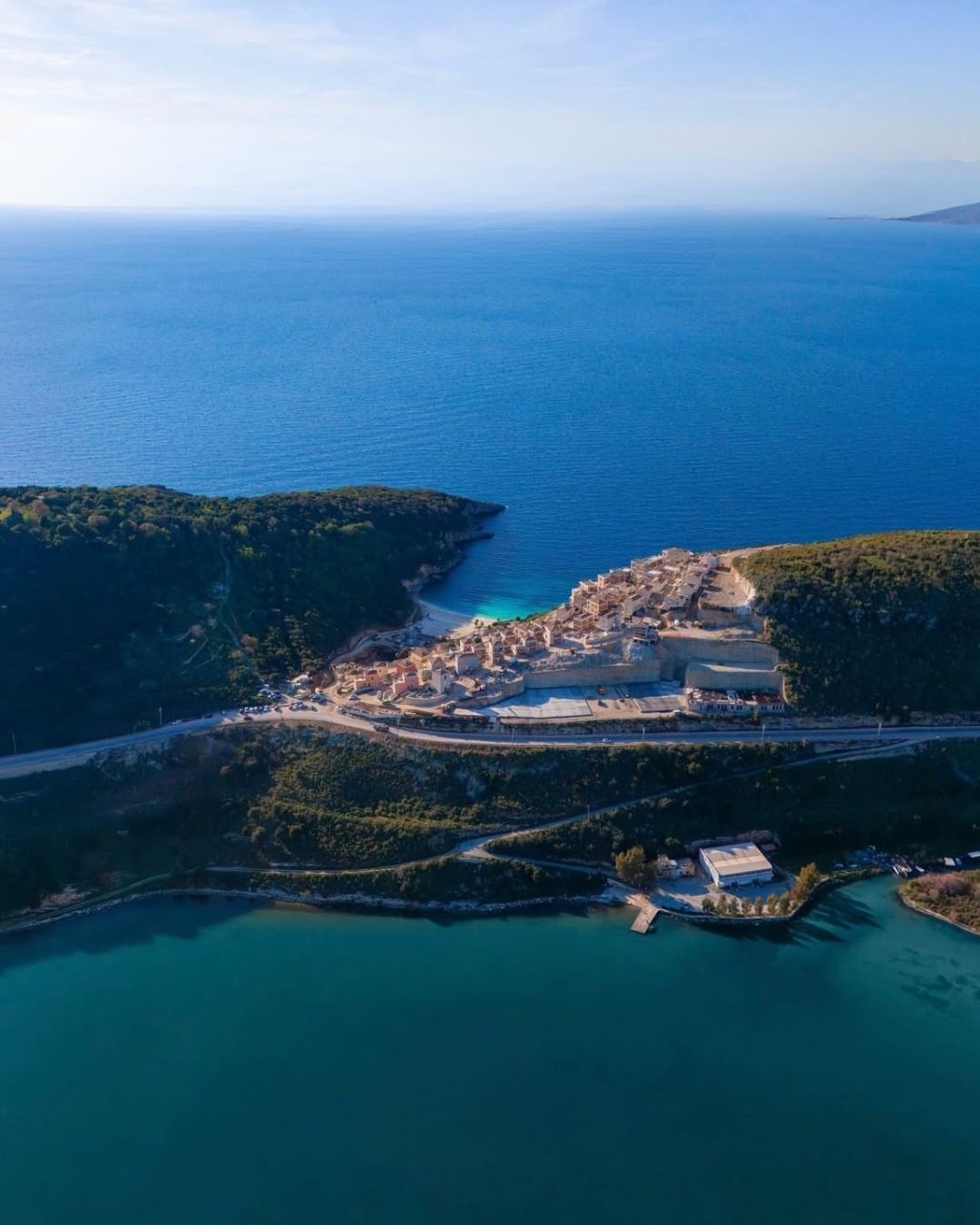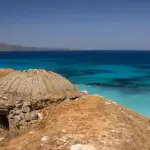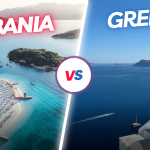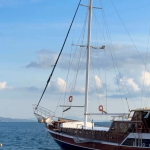
When you live in a place like Saranda, surrounded by ruins older than most European capitals, it’s hard not to feel that history quietly shaping your days. Sometimes, when I walk near the old city walls by the port, I imagine what this coastline looked like 2,500 years ago — before the cafés, before the new residences, before even the Romans arrived.
It all began with the Illyrians.
Who Were the Illyrians?
The Illyrians were ancient tribes who once ruled the western Balkans — from modern Albania all the way up through Montenegro, Croatia, and Bosnia.
They were mountain people and sailors, known for their bravery, strong fortresses, and skill in trade.
What I love about learning their story is realizing how deeply rooted our culture is in resilience. Even back then, the Illyrians were building fortified settlements on cliffs and near the sea — places like the ancient city of Butrint, which today is only a short drive from Saranda.
You can still feel that same strength in the way Albanians build today — stone meeting sea, tradition meeting modernity.
Geographic Roots of Illyria
The heart of ancient Illyria lies where modern Albania now stretches — from the northern mountains down to the Ionian coast.
Our ancestors lived close to the sea, trading with Greek colonies on the coast and developing a distinct culture that mixed independence with openness.
Sometimes I drive along the coastal road from Saranda to Borsh, and the landscape itself feels ancient — olive groves scattered on steep hills, small bays where fishermen still work like their grandfathers did. It’s easy to imagine Illyrian ships docking in these coves centuries ago, long before any of us started talking about Saranda apartments for sale or beachfront property investments.
The Illyrian-Albanian Connection
Many historians and linguists believe that today’s Albanians are the direct descendants of the Illyrians.
It’s not just a romantic idea — there’s linguistic evidence, historical continuity, and countless records that trace the old Illyrian tribes to the medieval “Arbër” people, who later became “Albanoi.”
As someone who’s spent years meeting people from across Europe — investors, travelers, and new residents — I always tell them: we’re not a new nation trying to catch up with Europe. We’ve been here, part of its story, since the beginning.
And that’s something you feel in every stone street of Gjirokastër, in every mountain village where people still greet strangers with homemade raki.
Language Evolution: The Voice of Continuity
The Albanian language — so unique, so ancient — is believed to have evolved directly from Illyrian. It’s one of Europe’s oldest living tongues.
Despite centuries of invasions — Roman, Byzantine, Ottoman — it survived. That survival tells you everything about the people here: independent, proud, and deeply connected to their roots.
It’s the same kind of endurance you see in the families who have kept their coastal land for generations, now turning it into beautiful villas and affordable properties that still carry the quiet rhythm of the land.
The Roman and Byzantine Periods
The Romans conquered Illyria in the 2nd century BC, yet the Illyrian identity never disappeared. Many tribes escaped into the highlands, preserving their customs, dialects, and traditions — the same mountainous regions where modern Albanians would later flourish.
When you visit the ruins of Butrint, Apollonia, or Byllis, you see layers of civilizations built one on top of another — Illyrian foundations under Greek temples, Roman mosaics above them, and Byzantine chapels on top.
That’s Albania in a nutshell: old, layered, and quietly magnificent.
Cultural Legacy in Modern Albania
Traces of Illyrian heritage are still everywhere around us.
Durrës was once called Dyrrachium. Shkodra — Scodra. And of course, Butrint — the crown jewel of the south.
Every time I bring clients to view properties near Butrint, I remind them they’re walking through thousands of years of history. Just seven minutes from there, in Ksamil, we have a modern one-bedroom apartment — a 2025 construction with a shared private pool and a calm neighborhood that still feels untouched by mass tourism.
It’s funny how the contrast between ancient ruins and new architecture can feel so natural here. Quiet luxury, surrounded by heritage.
The Illyrian Identity in Modern Times
The idea of Illyrian descent became a cornerstone of Albania’s national identity, especially during the Rilindja Kombëtare — our 19th-century National Awakening. It wasn’t just history; it was proof that we belonged to one of Europe’s oldest civilizations.
I think about that sometimes when I stand on my balcony overlooking the Ionian, watching the ferries glide between Corfu and Saranda. The same waters the Illyrians once sailed.
Today, instead of trading amphorae, we’re trading ideas, investments, and a new lifestyle — one that respects the past but looks confidently toward the future.
Modern Reflections: Where History Meets Real Estate
People often ask me why I chose to work in real estate instead of leaving for a bigger European city. The truth is — I fell in love with this mix of ancient and new.
Last month, while showing a couple from the Netherlands a seaview apartment in Saranda, they stood silent for a moment on the balcony. The sun was setting, and you could see the whole bay — unblocked, calm, golden. One of them whispered, “This feels ancient.”
That’s when it hit me: they weren’t just buying a property; they were buying into the story of this land.
That residence, by the way, is one of my favorites — a safe, quiet neighborhood, a pool overlooking the sea, and that view you simply can’t fake. It’s perfect both for living and investment — elegant, private, and full of soul.
The Line Between Old Stones and New Dreams
Sometimes I take a small detour on my way to Borsh — a tiny gravel road that passes by a spring the locals call “Uji i Ftohtë.” Most tourists never see it. The water is crystal clear, and there’s always someone selling honey nearby. That kind of detail — that combination of simplicity and beauty — is what I call real Albania.
Not far from there, our team has been working on the White Residence Villas in Borsh.
They’re luxurious, yes — each with private pools, verandas, and sea views — but more than that, they’re rooted. Built by a company with over 15 years of experience, 150 skilled professionals, and a vision to blend comfort with nature.
Surrounded by nothing but olive trees and sky, it’s the kind of place where you can still hear silence — the same silence the Illyrians once knew.
Evolution, Language, and Lifestyle
When you live here long enough, you realize history isn’t something behind us — it’s underneath us.
Even in Ksamil, where the summer buzz can feel electric, you still find quiet corners.
Like the new duplexes we’re offering — 2025 residences with two private swimming pools, underground parking, and complete privacy just 300 meters from the beach.
It’s one of those projects where everything aligns — modern architecture, perfect location, and that Mediterranean air that somehow slows down time.
Why the Illyrians Still Matter Today
Understanding our Illyrian roots isn’t just about pride; it’s about perspective.
It reminds us that Albania isn’t “new” on the map — it’s ancient.
Older than Rome. Older than most of the Europe we look up to.
For travelers and investors alike, this connection makes every experience here richer.
When someone buys seaview apartments in Saranda or villas on the Albanian Riviera, they’re not just making a financial choice — they’re joining a legacy that began before recorded history.
And that’s what I love most about my job. Every property tells a story, but in Albania, every story goes back a little further — all the way to the Illyrians.
Final Thoughts
Our roots give meaning to what we build today.
From the fortresses of ancient Illyria to the peaceful villas overlooking Borsh Bay, the thread of continuity is clear.
We are people of the sea, the sun, and the stones — proud heirs of a civilization that knew how to live beautifully and endure gracefully.
So when you next walk the streets of Saranda, or watch the waves crash near Ksamil, remember — you’re not just standing in a modern coastal town.
You’re standing where it all began.
المنشورات ذات الصلة:
Discover how Albania evolved from isolation to one of the Mediterranean’s most promising investment destinations — exploring its economic transformation, booming tourism, and rising real estate opportunities in Saranda, Ksamil, and Borsh.
Discover which country offers the best property returns in 2025 — Albania or Greece. A local Saranda real estate expert compares prices, ROI, tourism growth, and long-term investment potential on the Albanian Riviera.


 The Ancient Illyrians: The Roots of the Albanian People
The Ancient Illyrians: The Roots of the Albanian People
 From Isolation to Investment: How Albania Transformed Its Economy in 30 Years
From Isolation to Investment: How Albania Transformed Its Economy in 30 Years
 Albania Real Estate ROI vs Greece: Which Country Wins in 2025
Albania Real Estate ROI vs Greece: Which Country Wins in 2025
 Capital Growth in Albania: How Real Estate Prices Are Rising Every Year
Capital Growth in Albania: How Real Estate Prices Are Rising Every Year
 Best Coastal Towns in Albania to Buy a Holiday Home
Best Coastal Towns in Albania to Buy a Holiday Home